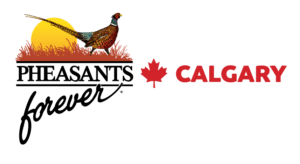As of December 2024, the Marginal Areas Program (MAP) in partnership with Ducks Unlimited Canada (DUC) is in the process of finalizing enrollment with 34 producers for the year. This will result in a total of 1,530 acres converted to perennial cover. Another 277 acres of wetlands and 848 acres of native uplands have also been retained in conjunction with MAP agreements. These are habitats that will stay intact for duration of the 10-year agreement.
2024 was a much more favorable year for establishing forage stands as the spring was cool and moist rather than hot and dry like the previous few years. Seeding went well with few delays and good soil moisture, giving producers ample time to get their forage crops in after their annual grains/oilseeds.
Soil salinity, which is when moisture evaporates from the soil and salt from the water in the soil crystalizes on the surface, continues to be an issue that many farmers are battling with the help of MAP.
The other leading concern is increasing acres of Kochia, a weed that thrives in dry saline soil and has herbicide resistance making it a tough competition to a crop. Combatting salinity and Kochia are 2 main reasons that producers are enrolling in the program. Producers are also saying that marginal crop acres don’t pay their way anymore as input costs continue to rise.
Record calf prices in 2023 and 2024 left most cattle producers with an empty stockyard, so the price of forage has become a factor in establishing small hay fields as well. We saw some farmers seed marginal cropland to a forage stand and within 2 years go from losing $400/acre (canola) to making $200/acre by selling the hay.
MAP is starting to sell itself, it’s just a matter of getting the word out to as many producers as possible and maintaining the trust and communication that we have built.
Update information provided by Graydon Garner, Ducks Unlimited Canada.
As a partner of MAP in Alberta, Pheasants Forever Canada helps DUC provide farmers with a financial solution to areas of unproductive land. MAP provides $125/acre with a $25/acre top-up from Pheasants Forever Canada for a total $150/acre to producers who plant perennial cover in marginal areas of annual cropland.
Pheasants Forever’s investment will help boost this incentive offer to producers and expand awareness of Pheasants Forever and our Save the Edges campaign in Alberta.
Increasing perennial cover on the landscape benefits upland game birds such as grey partridge, pheasants and sharp-tailed grouse. Perennial cover also benefits biodiversity, beneficial insects, waterfowl and other wildlife species. Environmental benefits also include carbon sequestration and improving soil and water quality.
MAP provides establishment advice and a bonus pollinator-friendly seed pack. The Pollinator Powerpack is a blend of insect-friendly flowering forage species.
MAP is a unique offer for Alberta growers to increase the profitability of marginal areas which are becoming easier to delineate through precision farming technology.
In addition to the incentive and pollinator bonus, MAP also offers access to Echelon from Nutrien Ag Solutions. Echelon’s crop advisors work with producers to create a precise picture of their fields, giving them the confidence to make better decisions in both planning and execution.
Thanks to our supporters, Pheasants Forever Canada is able to invest in Ducks Unlimited Canada’s (DUC) Marginal Areas Program (MAP).

